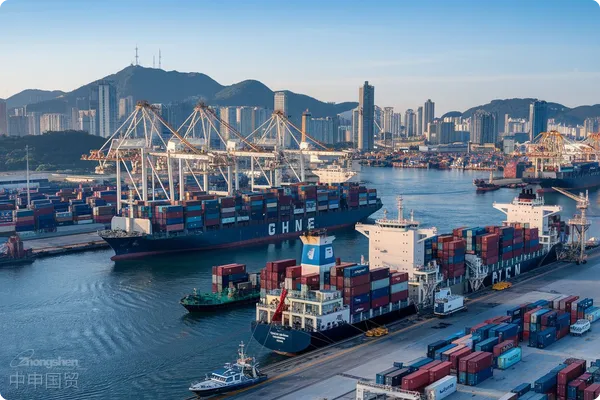- Shanghai Zhongshen International Trade Co., Ltd. - Two decades of trade agency expertise.
- Service Hotline: 139 1787 2118

Contents
ToggleThe Core Value and Risk Management of Import Equipment Agency Terms
Against the backdrop of global industrial chain restructuring, the 2025 equipmentImport RepresentationThe terms exhibit a distinctly professionalized trend. Professional.foreign tradeAgency data shows that import disputes caused by contractual loopholes have increased by 37% year-on-year compared to last year, with high-value equipment transactions accounting for 82% of the total disputes. Based on international trade practices and the latest legal precedents, this article analyzes the key elements of agency clauses for imported equipment.
I. The Three Core Modules of Agency Terms
The terms of cargo delivery must clearly define the transportation responsibility matrix:
- The choice between FOB and CIF terms directly affects a total cost fluctuation of 3%-7%.
- Special equipment requires agreement:
- Shockproof packaging standards (ASTM D4169 or ISTA 3E)
- Transportation Monitoring Requirements for Temperature and Humidity Sensitive Equipment
Quality inspection clauses must include technical parameters:
- The acceptance criteria must align with the original equipment manufacturer's technical documentation.
- The sample retention mechanism must specify the storage period (recommended ≥ warranty period + 6 months).
Payment terms should include phased verification milestones:
- It is recommended to keep the advance payment ratio between 20% and 30%.
- The final payment requires binding the equipment for trial operation acceptance.
II. Strategies for Addressing Special Risk Clauses
A certainMedical EquipmentThe import case demonstrates that due to the absence of an agreed-uponScope of Software Copyright Authorization, resulting in restricted device functionality and triggering a $2.35 million claim. It is recommended that the terms must clearly specify:
- Embedded Software Usage Rights (Standalone/Network Environment)
- System Upgrade Service Period and Cost Responsibility
Under the framework of the EU's new regulations in 2025, special attention must be paid to the import of industrial machine tools:
- CE certification extended to full life cycle management
- Energy Efficiency Classification Standard (EEE Class III)
III. Four-Dimensional Operational Guidelines for Clause Optimization
- Technical Terms Review:Establish an expert review panel covering the three fields of mechanical, electrical, and software.
- Legal Clause Review:Key Focus Areas for Reviewing Updates in INCOTERMS? 2025
- Risk-sharing mechanism:Establish a performance bond system equivalent to 10%-15% of the equipment value.
- Dispute Resolution Clause:It is recommended to stipulate the jurisdiction of the Singapore International Arbitration Centre (SIAC).
A certain semiconductorEquipment ImportsTypical cases demonstrate that by configuringPhased payment + third-party inspectionTerms: Successfully avoided a $3.8 million loss due to equipment compatibility issues. This confirms the decisive role of meticulous clause design in risk prevention.
IV. Suggestions for Dynamic Clause Management
It is recommended that import enterprises establishTerm Database, focusing on:
- MainEquipment ExportThe frequency of national regulatory updates (averaging 2-3 revisions per quarter in the US/EU/Japan).
- Adjustment of International Transport Insurance Clauses (Amendment 42 of the 2025 IMDG Code)
- Early Warning on Technical Barriers (Key Monitoring of U.S. BIS and EU TBT Notifications)
According to data from professional agencies, enterprises that implement dynamic management of contract terms experience a 61% reduction in dispute incidence for equipment import projects and a 23% improvement in average customs clearance efficiency. This highlights the strategic value of systematic contract management in modern international trade.
Related Recommendations
? 2025. All Rights Reserved. Shanghai ICP No. 2023007705-2  PSB Record: Shanghai No.31011502009912
PSB Record: Shanghai No.31011502009912










